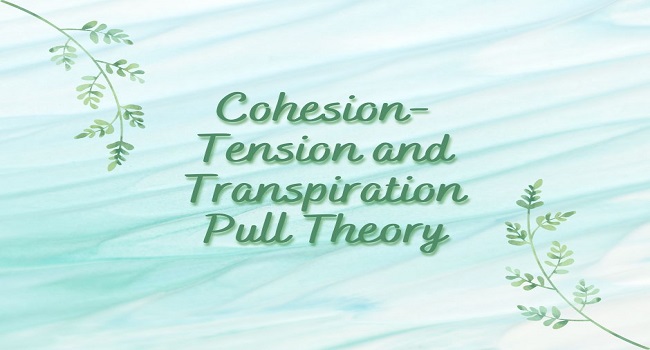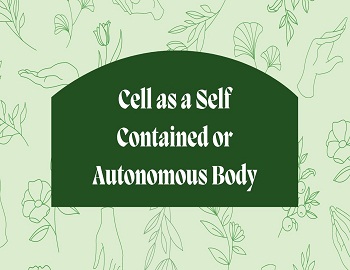Cohesion-Tension and Transpiration Pull Theory:
This theory was proposed by Dixon and Jolly in 1894. This is the most accepted theory of water movement through plants. It was further improved by Dixon in 1914. This theory is based on two points:
- Transpiration pull is exerted on the water column.
- Cohesive property of water molecules so as to form an unbroken column of water in the xylem.
Transpiration Pull- Water is lost from mesophyll cells to the intercellular spaces as a result of transpiration. From the intercellular spaces, water vapors move out of the leaf surface through the stomata. Due to the loss of water from mesophyll cells, the DPD increases. With the increase in DPD, these cells absorb water from adjoining cells, ultimately water is absorbed from xylem elements of vascular bundles of the leaf. Since there is a continuous water column in the xylem elements, a tension or pull is transmitted down from petiole to the stem and finally to the roots leading to the upward movement of water.
Cohesion of Water Molecules in Xylem- The tracheids and vessels of the xylem are long, tubular structures extending from root to leaf. These are filled with water. The water molecules are held together from mesophyll to root hairs by the cohesive force.
Thus according to this theory, water ascends in the plants due to transpiration pull and cohesive force of water molecules.
Evidences in Support of the Theory:
Following evidences have been put forth to support this theory:
(1) The osmotic pressure of mesophyll cells has been recorded up to 20 atm. which is sufficient for the ascent of sap.
(2) It is purely a physical process that does not require metabolic energy.
(3) The tensile strength of the xylem is between 20-300 atm. which is enough to prevent any breaking of the water column.
(4) The theory gets further support when it is compared with the porous pot experiment. When at the top of a continuous water column a porous pot is placed and its water is subjected to evaporation, the water column is put under tension. Due to the cohesive property of water molecules, this column does not get broken while evaporation continues. It is said that a similar kind of mechanism operates in plants.
Objection to Cohesion-Tension and Transpiration Pull Theory: A serious objection raised against this theory was that the gas dissolved in water formed bubbles under tension and high temperature. The presence of such an air bubble would break the continuity of the water column and thereby stop the ascent of sap due to transpiration pull. But Scholander (1957) proposed that the continuity of the water c column is maintained because of the presence of pits in the lateral walls of vessels. as shown in the figure below.










Comments (No)